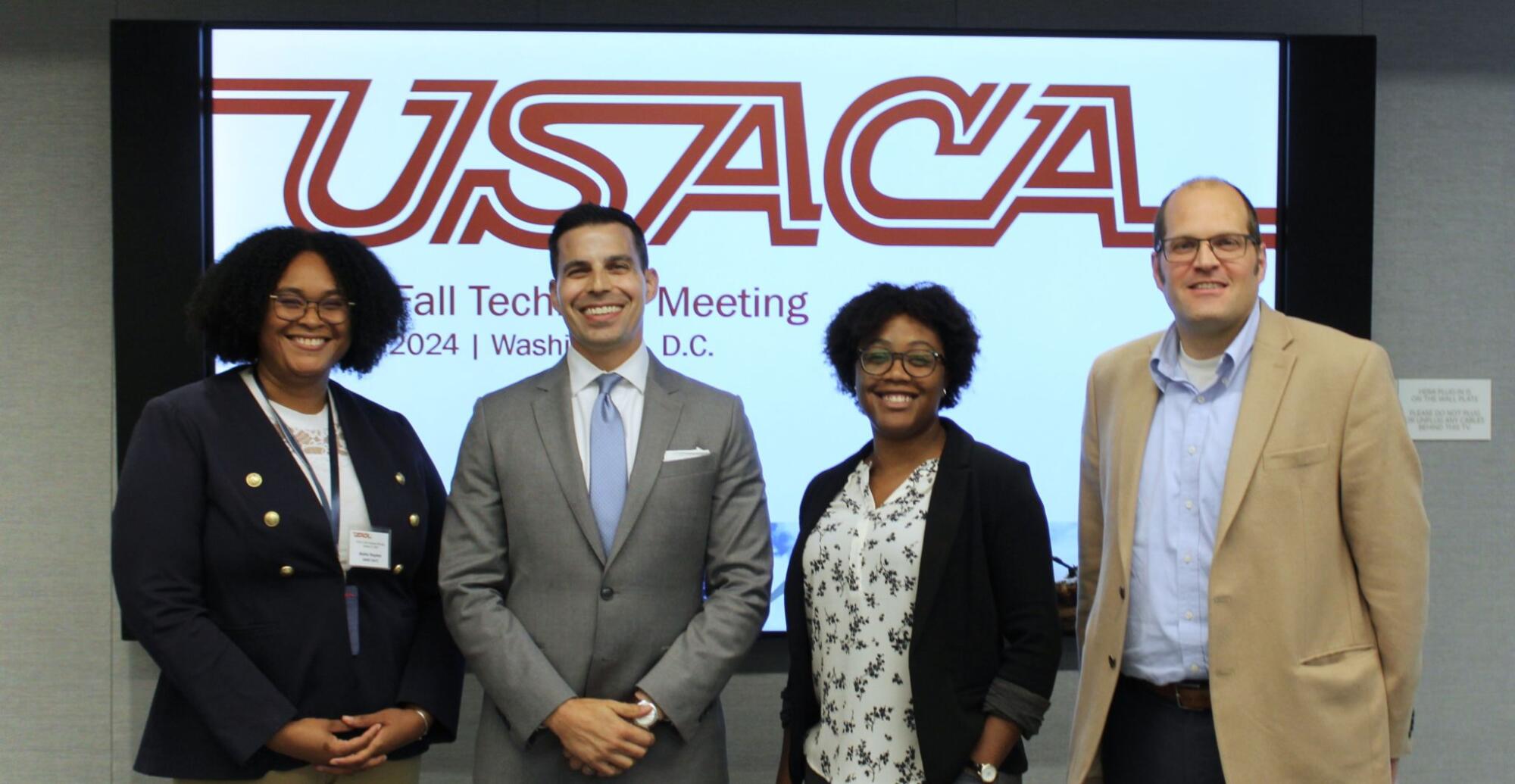Welcome to the November edition of A Capitol View.
The people have spoken. And come January that means a new crop of House and Senate leaders, committee members, and the swapping out of cabinet secretaries and other political appointees atop federal agencies and regulatory bodies.
SMI’s bipartisan team is tracking the unfolding changes to the congressional oversight landscape and the presidential transition to identify the personalities, policies, and priorities – and how they converge – to help our clients advance their priorities and seize new opportunities.
Republicans flipped the Senate, but the House is still too close to call. We are waiting on a few dozen races to see if the GOP maintains control (highly likely) or if the Democrats emerge with a slim House majority. Whatever the outcome, the majorities in both chambers will be exceedingly tight.
Appropriations shakeup: Key leaders overseeing defense appropriations are in flux. Senate Defense Appropriations Chair Sen. Jon Tester (D-MT) lost reelection. Look for outgoing Senate Majority Leader Mitch McConnell to take Tester’s perch in the GOP-controlled Senate. Meanwhile, Rep. Ken Calvert, the California Republican who chairs the House defense spending panel, leads in a tight race that hasn’t been called yet.
Up next: Look for Republican leadership elections in both chambers as soon as Nov. 13.
Executive action: Meanwhile, the (educated) guessing game is underway to determine who will most likely make up the new administration. That will pick up in the coming weeks as the presidential transition gets into high gear.
Already, some familiar faces are at work leading the transition teams for federal agencies overseeing defense, trade, energy, cybersecurity, tech, and more.
There is lots of discussion that the newly empowered GOP will seek to dismantle elements of the outgoing administration’s energy, infrastructure, or emerging tech agendas. But like everything in Washington, nothing will be clear cut. For one, some Republicans are likely to resist, particularly those representing states and districts that have benefited from the federal investments in onshoring clean tech, semiconductors, and more.
First things first: The lame duck Congress returns Nov. 12 to tackle a full agenda before January.
The first major order of business will be to avoid a government shutdown when temporary appropriations for the current fiscal year run out Dec. 20. It’s unclear whether that will come in the form of a deal to fund federal agencies through September 2025 or Republicans seek another continuing resolution expiring earlier in the year.
But we expect a tussle over the topline number, as defense hawks in the Senate push for more spending beyond the caps of the Fiscal Responsibility Act but fiscal conservatives in the House Republicans seek tighter limits.
Urgent needs: Other funding demands in the coming weeks include the federal response to Hurricane’s Helene and Milton and stalled military aid for Israel and Ukraine, which is now more in doubt with Republican success at the polls.
Policy chops: Also, on the agenda in the lame duck session is the pending annual National Defense Authorization Act that sets overall defense policy. Securing passage, however, will depend heavily on wider agreement on federal spending levels, raising the prospect that the NDAA could also get delayed into the new Congress.
Helming the committee by then is likely to be Sen. Roger Wicker, the Mississippi Republican who laid out a blueprint earlier this year for increasing annual defense spending to 5 percent of gross domestic product.
Stay tuned as SMI navigates all the moving parts of federal decision making and the picture comes into focus in the coming weeks.
SMI SPOTLIGHT
 ADDITIVE: SMI is pleased to announce we have brought aboard as a senior advisor Elizabeth Henry, an experienced leader in additive and advanced manufacturing specializing in public-private partnerships.
ADDITIVE: SMI is pleased to announce we have brought aboard as a senior advisor Elizabeth Henry, an experienced leader in additive and advanced manufacturing specializing in public-private partnerships.
Elizabeth is a former contractor for the Office of the Undersecretary of Defense for Research and Engineering, where she founded the Joint Additive Manufacturing Working Group and was a key contributor to the Department of Defense’s Additive Manufacturing Strategic Plan. Prior to her role at DoD, she worked at The ExOne Company (now Desktop Metal), where she expanded sales by 37% over 18 months.
We are thrilled to have Elizabeth on the SMI team to help advance client objectives.
DEFENSE
‘IMMINENT NEED’: SMI is proud to support R&D to lower carbon emissions and a new project at Marquette University to develop an combustion system for naval vessels that can utilize a wider range of fuels.
Dr. Adam Dempsey and Dr. Casey Allen, assistant professors of engineering, were awarded a $2 million grant from the Office of Naval Research to determine whether jet fuel, sustainable aviation fuel, methanol, hydrogen, ammonia and others could replace F76 diesel fuel currently used in the engines of naval vessels.
“There is an imminent need to reduce greenhouse gas emissions from all transportation and power generation sectors, including naval marine vessels, and current propulsion system alternatives face many challenges,” Dempsey said.
Flexibility is key: The goal of the research effort, according to the SMI client, “is to maintain diesel engine operational characteristics and efficiency, without sacrificing performance, while offering fuel flexibility and operational resilience — meaning the vessel can run on essentially any fuel and still complete its mission.”
Other partners on the project include the University of Wisconsin-Madison and Precision Combustion, Inc.
‘ACTION PLAN’: The Department of Defense has published an implementation plan for the first-ever National Defense Industrial Strategy that is billed as “an action plan to achieve a 21st century defense industrial base.”
“By addressing critical gaps, fostering innovation, and enhancing collaboration, we are confident the initiatives set forth will strengthen our national security and drive the defense industry forward into a new era of technological advancement and resilience,” according to the executive summary.
Thrusts: The document lays out six implementation initiatives, including on “New Capabilities Using Flexible Pathways,” “Production and Supply Chains,” and “Capabilities and Infrastructure Modernization.”
These initiatives “will produce a focused, coordinated effort that drives the NDIS to fruition,” it states.
Plus: Defense Primer: Emerging Technologies
ENERGY
 ACCELERATED DEPLOYMENT: SMI continues to assist clients in scoring wins in advancing clean energy tech. Among the latest wins for our clients include the University of Michigan, GE Vernova, and Triton, who are among those securing Department of Energy and Department of Interior funding for offshore renewables.
ACCELERATED DEPLOYMENT: SMI continues to assist clients in scoring wins in advancing clean energy tech. Among the latest wins for our clients include the University of Michigan, GE Vernova, and Triton, who are among those securing Department of Energy and Department of Interior funding for offshore renewables.
Protecting wildlife: Michigan and Triton were selected to pursue “additional technologies and strategies to reduce the noise associated with installation of fixed-bottom turbine foundations, which has the potential to promote ocean co-use with marine wildlife.”
Meanwhile, GE Vernova is among awardees selected “to improve the integrity of mooring systems that keep floating offshore wind energy platforms and marine energy converters in position when operating in deep waters.”
“By increasing the reliability of offshore wind and marine energy technologies and ensuring environmentally responsible development, these selected projects can accelerate the deployment of offshore renewable energy.” said Jeff Marootian, principal deputy assistant secretary for DOE’s Office of Energy Efficiency and Renewable Energy.
TECHNOLOGY
 FLAGSHIP FACILITY: SMI was proud to support a $825 million federal investment by the Department of Commerce and the National Semiconductor Technology Center (NSTC) to make the Extreme Ultraviolet (EUV) Accelerator, in Albany, New York, as the first CHIPS for America R&D Flagship Facility.
FLAGSHIP FACILITY: SMI was proud to support a $825 million federal investment by the Department of Commerce and the National Semiconductor Technology Center (NSTC) to make the Extreme Ultraviolet (EUV) Accelerator, in Albany, New York, as the first CHIPS for America R&D Flagship Facility.
“With this first proposed flagship facility, CHIPS for America is providing access to cutting-edge research and tools to the NSTC and its launch represents a key milestone in ensuring the United States remains a global leader in innovation and semiconductor research and development,” said Commerce Secretary Gina Raimondo. “The research and development component of the CHIPS and Science Act is fundamental to our long-term national security and ensuring the U.S. remains the most technologically competitive place on earth.”
ARTICULATING AI: The White House issued a memorandum that the Center for Strategic and International Studies described as “by far the most comprehensive articulation yet of United States national security strategy and policy toward artificial intelligence.”
The presidential memo lays out steps to carry out three primary objectives: “maintain U.S. leadership in the development of advanced AI systems; “accelerate adoption of frontier AI systems across U.S. national security agencies”; and “develop robust governance frameworks to support U.S. national security.”
And: Administration Outlines Coordinated Approach to Harness Power of AI for U.S. National Security
Plus: Framework to Advance AI Governance and Risk Management in National Security
WHERE CREDIT IS DUE: The Department of the Treasury, responding to industry calls to expand eligibility, issued final rules for a series of tax credits designed to spur investment and production of clean energy and other advanced technologies.
It issued final rules for the Section 48D and 50 Advanced Manufacturing Investment Credit under the CHIPS and Science Act that now cover investments in U.S. semiconductor manufacturing and semiconductor manufacturing equipment.
New categories: Treasury also published final rules for the Section 45X Advanced Manufacturing Production Credit covering clean energy technologies like solar and wind components, batteries and energy storage, and critical minerals.
The final rules reversed previously proposed exclusions for costs associated with mining, extraction and raw materials. Including them, with various stipulations and limitations, is generally seen as strengthening domestic supply chains for critical minerals and EV batteries.
Related: Trading Tensions: Navigating Policy Tools for a Diverse Critical Minerals Supply Chain
INNOVATION
 CONVENING AUTHORITY: SMI hosted the Fall Technical Meeting of the United States Advanced Ceramics Association, the leading industry alliance committed to promoting the use of advanced ceramics in a new generation of high-efficiency and high-performance products for surface transportation, aerospace, defense, energy, and industrial applications.
CONVENING AUTHORITY: SMI hosted the Fall Technical Meeting of the United States Advanced Ceramics Association, the leading industry alliance committed to promoting the use of advanced ceramics in a new generation of high-efficiency and high-performance products for surface transportation, aerospace, defense, energy, and industrial applications.
The Association’s growing membership heard from government officials on their plans for microelectronics, aerospace composites, and other advanced materials, and conferred on how to foster more resilient supply chains, expand testing and production capacity, and grow the workforce.
“Our Fall Technical Meeting included insightful discussions on the progress of our working groups and outlined plans for an upcoming visit to Capitol Hill in the spring,” said SMI COO Ken Wetzel, USACA executive director. “Additionally, we addressed agency priorities related to advanced ceramics, the President’s and Congress’s budget proposals, and relevant funding programs.”
CLIENTS IN THE NEWS
Center established in Sterling Heights to train students in high-tech manufacturing
U.S. Factory Towns Laid Low by the ‘China Shock’ Are Benefiting From New Investments
Govini Extends Partnership with BAE Systems to Support Critical Nuclear Deterrence Program
U.S. firm to qualify copper additive manufacturing for hypersonic flight with funding push





